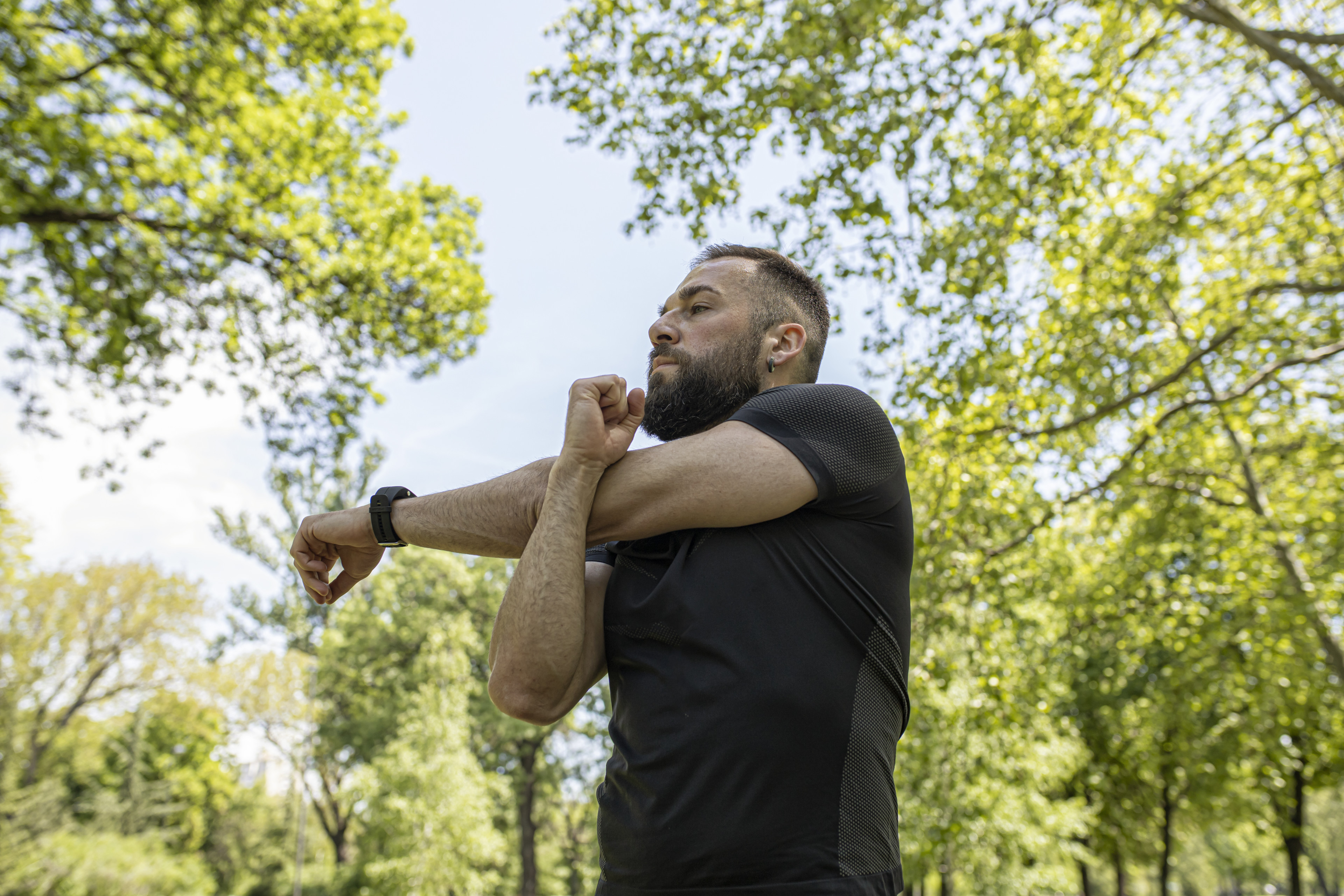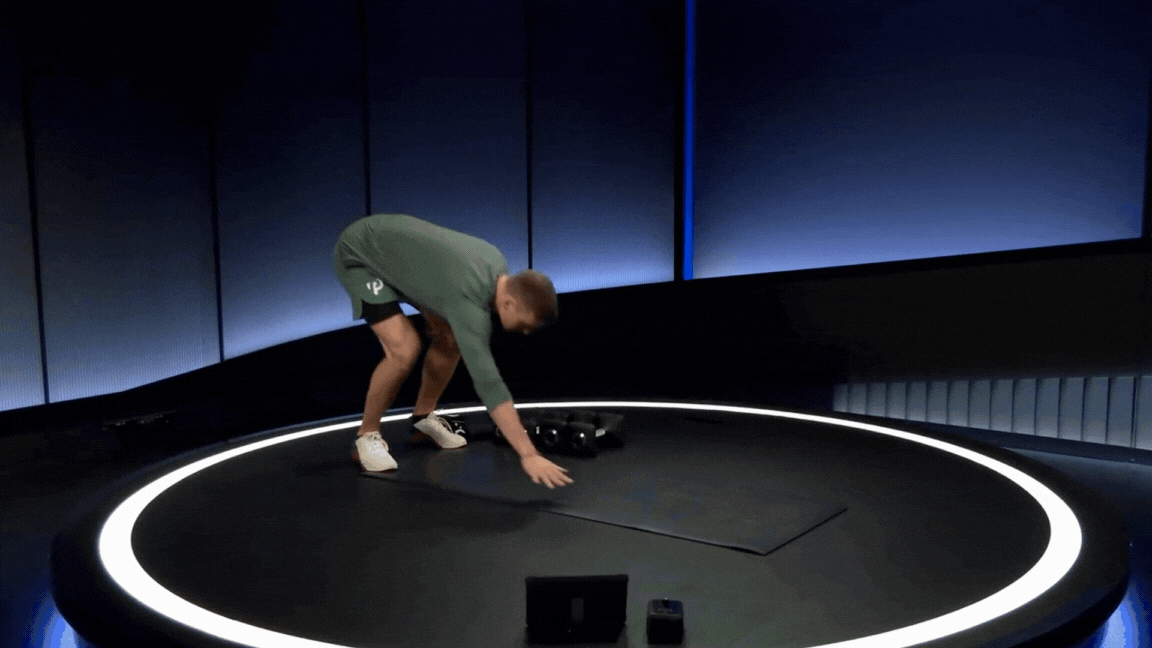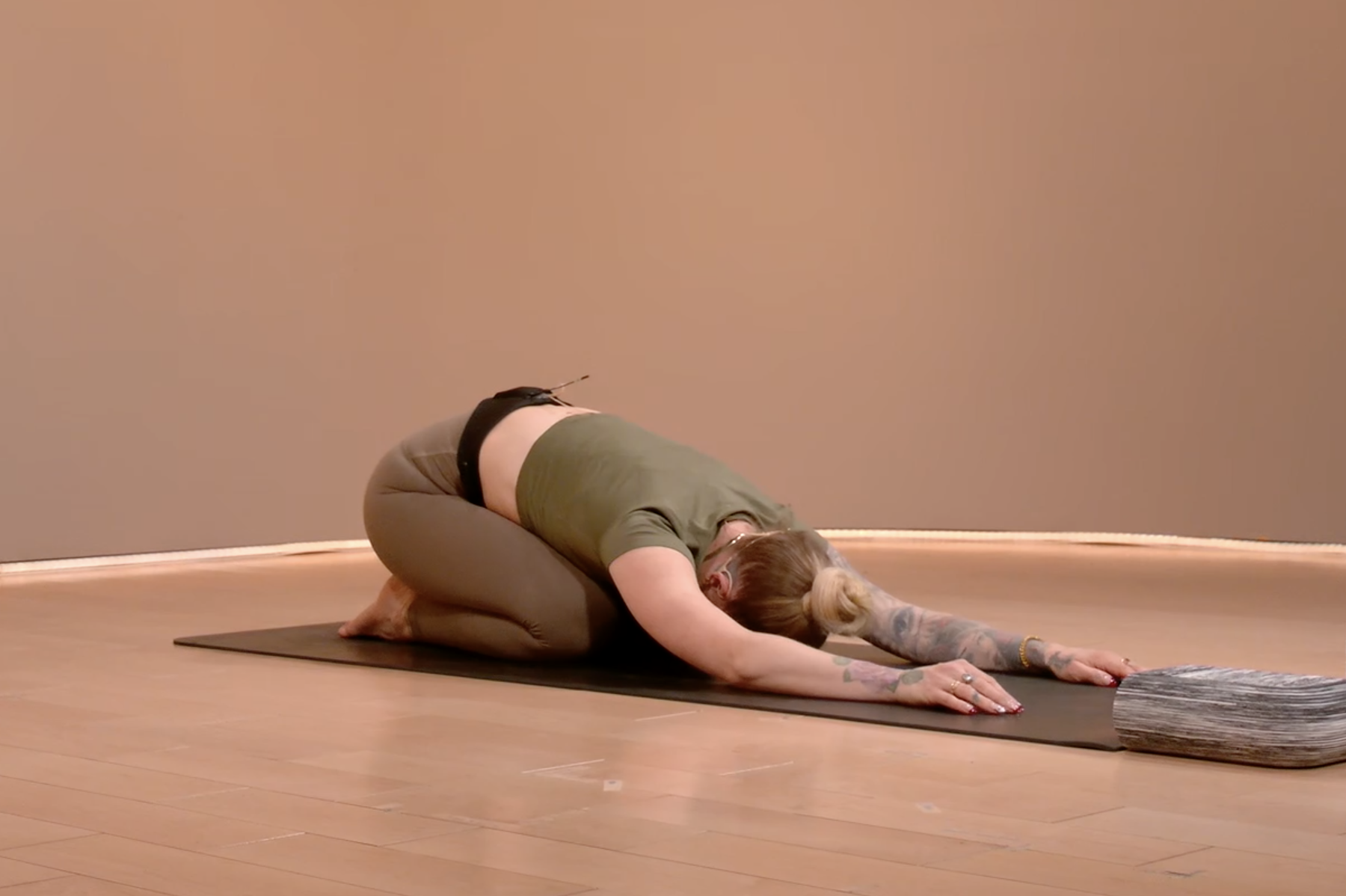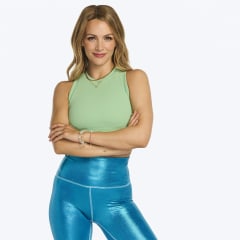
Dusan Stankovic/Getty Images
8 Upper Body Stretches to Relieve Tension In Your Shoulders, Arms, and Chest
Even if you aren't exercising your upper body, these stretches come in handy.
By Rozalynn S. Frazier•
Why Should You Stretch Your Upper Body?
How Long Should You Stretch Your Upper Body?
Which Muscles Do Upper Body Stretches Target?
8 Upper Body Stretches to Try
Imagine this: You’ve just wrapped up a killer workout loaded with chest presses, triceps dips, and push-ups galore. Your arms and shoulders feel wobbly at best, so you’re tempted to bypass any post-workout upper body stretches... But not so fast.
Stretching the muscles in your arms and shoulders aids your recovery and sets you up for your next sweat session, making it nonnegotiable. Even if you aren’t regularly exercising these muscles, you should still stretch them since you subconsciously use them every day.
Here’s what you need to know about why you should incorporate upper body stretches into your routine (plus, when and how to do them to best meet your goals).
Why Should You Stretch Your Upper Body?
Doing upper body stretches can benefit you before, during, and after your workouts. If you’re looking to boost your fitness, Peloton instructor Leanne Hainsby-Alldis says that regularly stretching these muscles can improve your athletic performance, decrease your risk for injury, and even increase flexibility (which is crucial in all levels of strength training). The benefits of upper body stretches carry over outside of your workouts as well, allowing you to move through your day with more mobility.
It’s important to note that there are also different types of upper body stretches, with the two most popular being static (aka stationary) and dynamic (aka controlled movements). Both effectively increase range of motion. “The main difference between these stretching methods is their intent, so dynamic stretches are typically performed before your workout to warm up your body, and static stretches are performed after exercise or on recovery days to maintain range of motion,” Leanne says.
And if you don’t stretch your upper body regularly, the muscles in this area can “become short and tight, leading to weakness and muscle damage, strains, and joint pain,” Leanne says. “Super tight muscles limit your range of motion and may create a muscle imbalance. The weakness in the muscles will then impact your ability to perform certain exercises.” The bad news doesn’t stop there. According to Leanne, “You can end up compensating for the limited range of motion and imbalances and do a move in a way that’s unsafe.”

Peloton App
Access thousands of classes with no equipment needed.
How Long Should You Stretch Your Upper Body?
You don’t have to stretch your upper body for hours on end to experience the benefits we outlined above. If you’re just getting started with upper body stretches, Leanne suggests holding each one for 30 seconds. Over time, you can gradually increase to one minute. “It doesn’t have to be complicated and doesn’t need to take a lot of time either,” she says.
Because whether you’re targeting muscles you just worked out or are aiming to relieve general soreness, stretching your upper body is pretty much always a good idea. Leanne prefers doing it right after exercising, when her muscles are already warmed up. “Muscles lengthen more when they're warm, so you may see greater improvements when you stretch after a workout,” she explains. “You'll also be less likely to pull or strain a muscle when it's warm and pliable.”
However, you can stretch your upper body even on days when you don’t work out. “There’s no harm in doing these stretches on a recovery day too,” Leanne adds. It’s all about what works best for you. Remember: Take things slow, especially when you’re just starting your routine. It’s OK to stretch until you feel tension, but if you feel any pain, pull back and contact your doctor.
Which Muscles Do Upper Body Stretches Target?
Below, we outline the major muscles you tap on while doing upper body stretches.
Pectorals: Colloquially known as “pecs,” the pectoralis major (located on the upper chest on both sides of the sternum) and the pectoralis minor (found underneath the pectoralis major), are responsible for shoulder movement and stabilization as well as arm rotation.
Latissimus Dorsi: Commonly called “lats,” this large muscle extends across your mid to lower back and contributes to shoulder movement and back stability.
Trapezius: Known as your “traps,” this large muscle spans across the base of your skull to the area between your shoulder blades. Consisting of an upper, middle, and lower section, it contributes to shoulder, arms, torso, and neck movement and posture.
Deltoids: These shoulder muscles, coined as “delts,” consist of three parts: anterior deltoids, middle (or lateral) deltoids, and posterior (or rear) deltoids. You use them when you bring your arms in front of your body, overhead, to the side, and behind your body.
Biceps: Located on the front of the upper arms between your shoulder and elbow, this muscle helps rotate and flex your arms.
Triceps: Positioned opposite of your biceps on the back of your upper arms, your triceps serve as a lever for your arm, help you bend and extend your elbows, and move your forearms.
8 Upper Body Stretches to Try
One upside of stretching your upper back? You can target specific muscles. So if you’re banging out bench presses, show your chest some love. If you're exerting yourself with overhead presses, your shoulders could probably use some attention. Leanne recommends these eight upper body stretches to relieve your biceps, triceps, chest, and shoulders. The best part? You only need five minutes to do them.

1. Cross Body Shoulder Stretch
Start in a standing or seated position.
Use your hand to grab the opposite arm right above the elbow.
Pull your arm across your body and toward your chest until you feel a shoulder stretch. Keep your elbow below your shoulder.
Hold this stretch for 30 seconds.
Repeat the above steps on the opposite side.
Muscles worked: Shoulders

2. Overhead Triceps and Shoulder Stretch
Start in a standing or seated position.
Bring one arm overhead and drop your forearm behind you, resting your hand between your shoulder blades.
With your other hand, grab your arm right above the elbow and gently pull it until you feel a stretch in your shoulder and the back of your arm. Keep your biceps close to your ear.
Hold this stretch for 30 seconds.
Repeat the above steps on the opposite side.
Muscles worked: Triceps, shoulders, and back

3. Supine Spinal Twist
Lie face up with your arms by your sides.
Hug your knees into your chest.
Drop your knees to one side while simultaneously twisting your torso in the opposite direction.
Align your knees and hips, square your chest to the ceiling, and keep your shoulders flat on the floor. You should feel the stretch in your back.
Hold this stretch for 30 seconds.
Repeat the above steps on the opposite side.
Muscles worked: Back

4. Backbend
Start in a standing or seated position with your fingers laced together behind your glutes.
Keep your back straight and squeeze your shoulder blades.
Push your arms up until you feel a stretch in your pecs.
Hold this stretch for 30 seconds.
Muscles worked: Chest

5. World’s Greatest Stretch
Start in a high plank position. Stack your shoulders over your wrists and keep your core tight.
Step your right foot to the outside of your right hand, coming into a low lunge with your knee directly over your foot. Don’t round your back.
Lift your right hand, opening your chest to the right as you extend your arm straight up. Square your hips.
Hold this stretch for 30 seconds before returning your right hand to the floor.
Repeat the above steps on the opposite side.
Muscles worked: Hip flexors, calves, glutes, hamstrings, chest, shoulders, intercostal muscles (between ribs), and obliques

6. Child’s Pose
Start in a kneeling position, with your knees slightly wider than hip-width distance apart and your feet together behind you.
Sit back on your heels and then fold forward so your stomach rests on your thighs.
Extend your arms straight out in front of you, resting them (and your forehead) on the floor.
To deepen this stretch, gently press your chest and shoulders toward the floor.
Hold this stretch for 30 seconds.
Muscles worked: Shoulders, back, hips, and glutes

7. Cobra Pose
Lie face down with your hands underneath your shoulders and your palms facing down.
Lightly press your feet into the floor and pull your belly button in toward your spine.
Press through your palms to lift your chest up until there’s a slight bend in your elbow. Keep your shoulders down and back.
Hold this stretch for 30 seconds.
Muscles worked: Chest, shoulders, and hips
8. Wrist Stretch
Start in a standing position.
Extend your right arm straight in front of you at shoulder height.
Keep your right arm extended as you use your left hand to grab onto your right fingers.
Pull your right hand back so your fingertips point up.
Hold this stretch for 30 seconds.
Repeat the above steps on the opposite side.
Muscles worked: Wrist extensors
This content is for informational and educational purposes only and does not constitute individualized advice. It is not intended to replace professional medical evaluation, diagnosis, or treatment. Seek the advice of your physician for questions you may have regarding your health or a medical condition. If you are having a medical emergency, call your physician or 911 immediately.
Read More

Stretching + Mobility
How to Stretch Before a Workout to Help (Not Hinder) Performance

Stretching + Mobility
Tight Hips? Try These 9 Hip-Opening Stretches for Relief

Stretching + Mobility
What's the Difference Between Static and Dynamic Stretching—And When Should You Do Each?

Health
Are You Experiencing ‘Tech Neck’? How to Tell—and How to Fix It
This content is for informational and educational purposes only and does not constitute individualized advice. It is not intended to replace professional medical evaluation, diagnosis, or treatment. Seek the advice of your physician for questions you may have regarding your health or a medical condition. If you are having a medical emergency, call your physician or 911 immediately.
Build full-body strength
Enter your email to get articles, instructor tips, and updates from Peloton sent to your inbox.
By providing your email address, you agree to receive marketing communications from Peloton.
For more about how we use your information, see our Privacy Policy.







